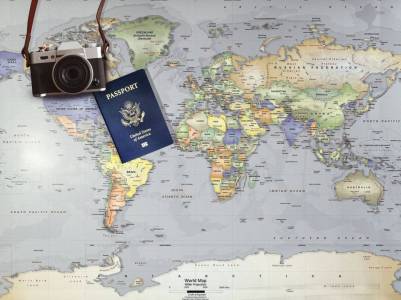( Image From Reddit)
Travel advisories are fundamental tools that provide crucial information about the destinations you plan to visit.
While they're valuable for anyone—whether you're organising a family holiday, a business trip, or curating an itinerary for clients—for solo travellers, they're a vital first step in choosing your destination and beginning your trip planning.
Around the world, government agencies issue these official warnings to share information about safety and security risks associated with specific destinations. These advisories are critical for both travellers and travel planners because they offer deep insights into potential threats, health risks, and political instability that could impact your journey.
Why Travel Advisories Are Important.
Understanding travel advisories isn't just about caution; it's about making informed choices that enhance your solo travel experience. Here's why they're indispensable:
- For Your Safety and Security:
- Destination Crime Rates: Advisories highlight areas with higher crime rates, such as those prone to theft, assault, or kidnapping.
- Current Political Unrest: They alert you to regions experiencing civil unrest, protests, or political instability that could lead to violence and disruptions.
- Terrorism Threats: You'll find warnings about potential terrorist attacks or threats, empowering you to make informed decisions and take necessary precautions.
- For Health Risks:
- Disease Outbreaks: Advisories provide information about outbreaks of infectious diseases (like Zika, Ebola, or malaria) and offer guidance on preventive measures.
- Health Infrastructure: They may assess the quality of healthcare facilities in a destination, helping you decide whether to seek medical treatment locally or consider evacuation if needed.
- For Natural Disasters:
- Natural Hazards: You'll be alerted to regions prone to natural disasters, such as earthquakes, hurricanes, or volcanic eruptions.
- Evacuation Plans: Travel advisories can provide information on evacuation procedures and emergency contacts in case of natural disasters.
- For Entry Requirements:
- Visa Regulations: They outline specific visa requirements for foreign nationals, including necessary documentation and application procedures.
- Customs and Immigration: Advisories provide information on customs regulations and immigration procedures, helping you avoid legal issues upon entry or exit.
Travel advisories typically use a colour-coded or tiered level system to indicate the severity of risks. They often provide detailed information on specific risk factors.
For example, a Level 4 advisory might strongly advise against all travel to a particular destination, while a Level 1 advisory may simply recommend normal travel precautions. Always dive into the details beyond just the level.
Where to Find Travel Advisories?
Finding reliable, up-to-date information is key and searching online for it is relatively easy. Here are the best sources:
- Government Websites: Most countries have official government websites that issue travel advisories for their citizens. These are your primary go-tos.
- Embassies and Consulates: Embassies and consulates can provide very specific and current information, especially for localised conditions.
- Specialised Travel Advisory Websites: Websites like the U.S. State Department's Travel Advisory website and the UK Foreign, Commonwealth & Development Office (FCDO) offer comprehensive and regularly updated travel advice.
Making the most of advisories means integrating them into your planning and ongoing journey:
- Check Regularly: Travel advisory information can change frequently, so it's crucial to check for updates both before and during your trip.
- Understand the Risks: Don't just skim the headline. Carefully read the detailed advisory information to fully assess the potential risks to your safety and health.
- Plan Accordingly: If warnings are issued while you're travelling, be prepared to adjust your itinerary to avoid high-risk areas or consider alternative destinations.
- Purchase Travel Insurance: Invest in comprehensive travel insurance, ALWAYS. This is non-negotiable for solo travellers, covering unexpected events like medical emergencies, trip cancellations, or lost luggage.
- Stay Informed: Use information from advisories to stay updated on current events and local news from your destination. Follow local news sources if possible.
- Trust Your Instincts: As a solo traveller, your intuition is an equally powerful tool, so listen to your gut when you feel uncomfortable or unsafe and act accordingly as it's always best to err on the side of caution and remove yourself from a potentially dangerous situation.

